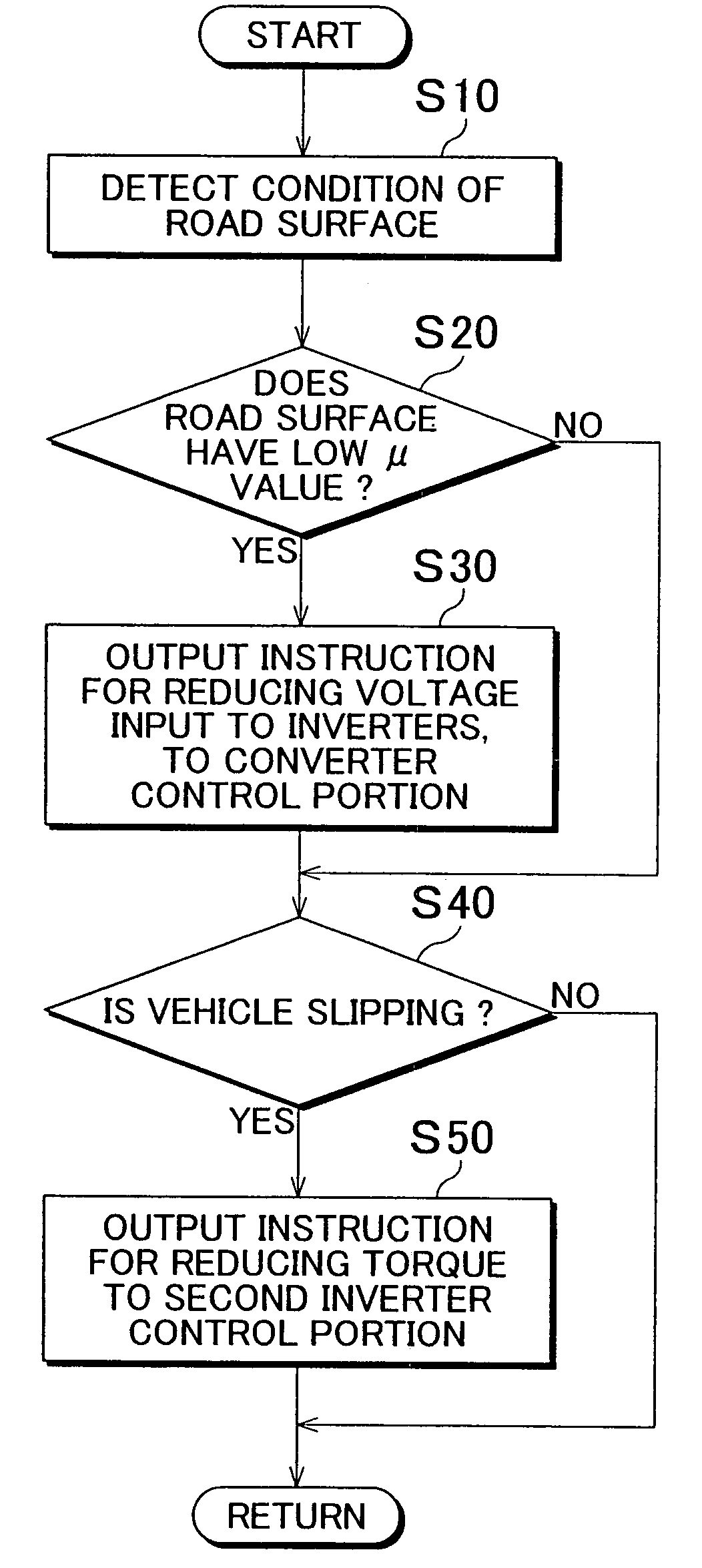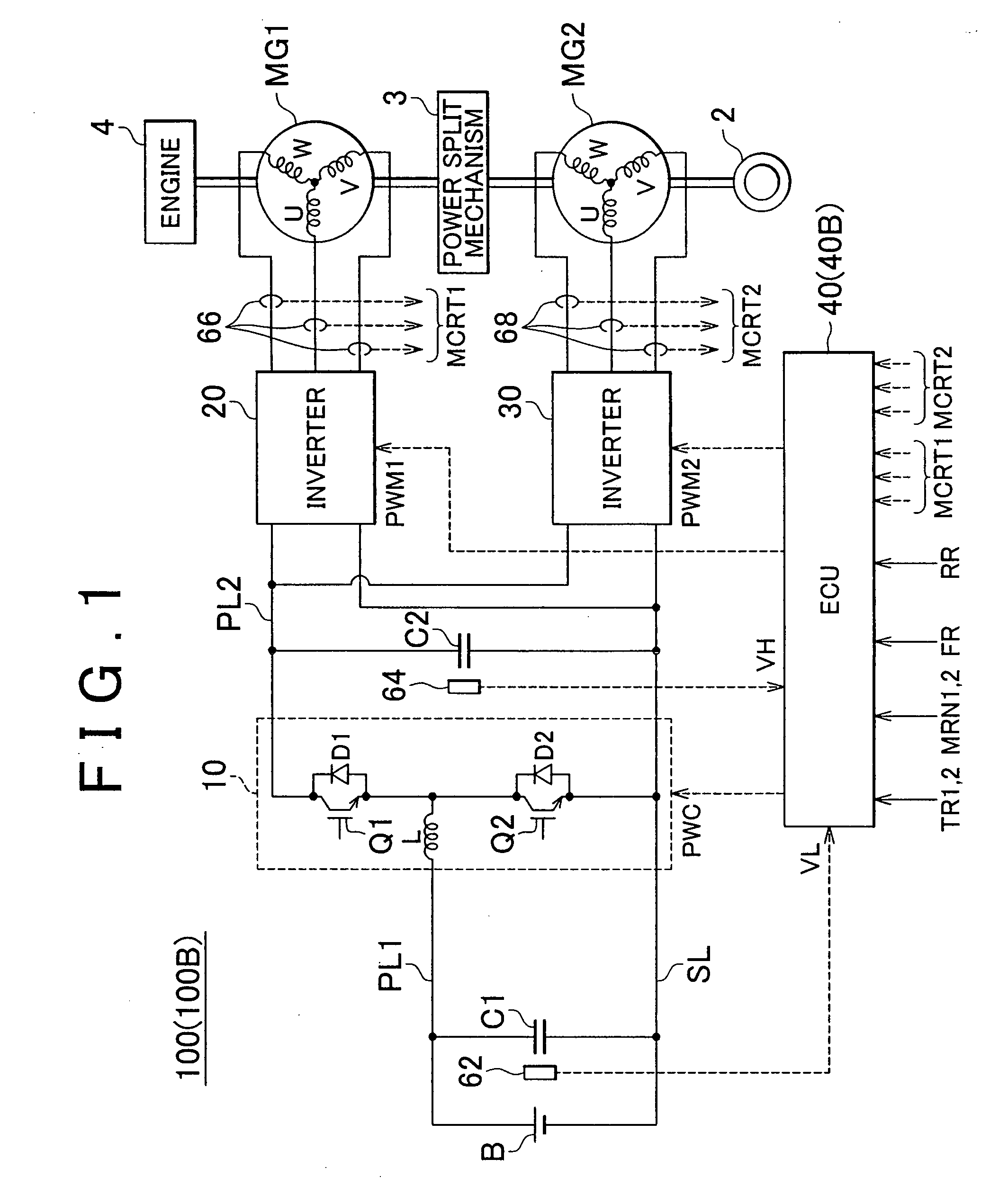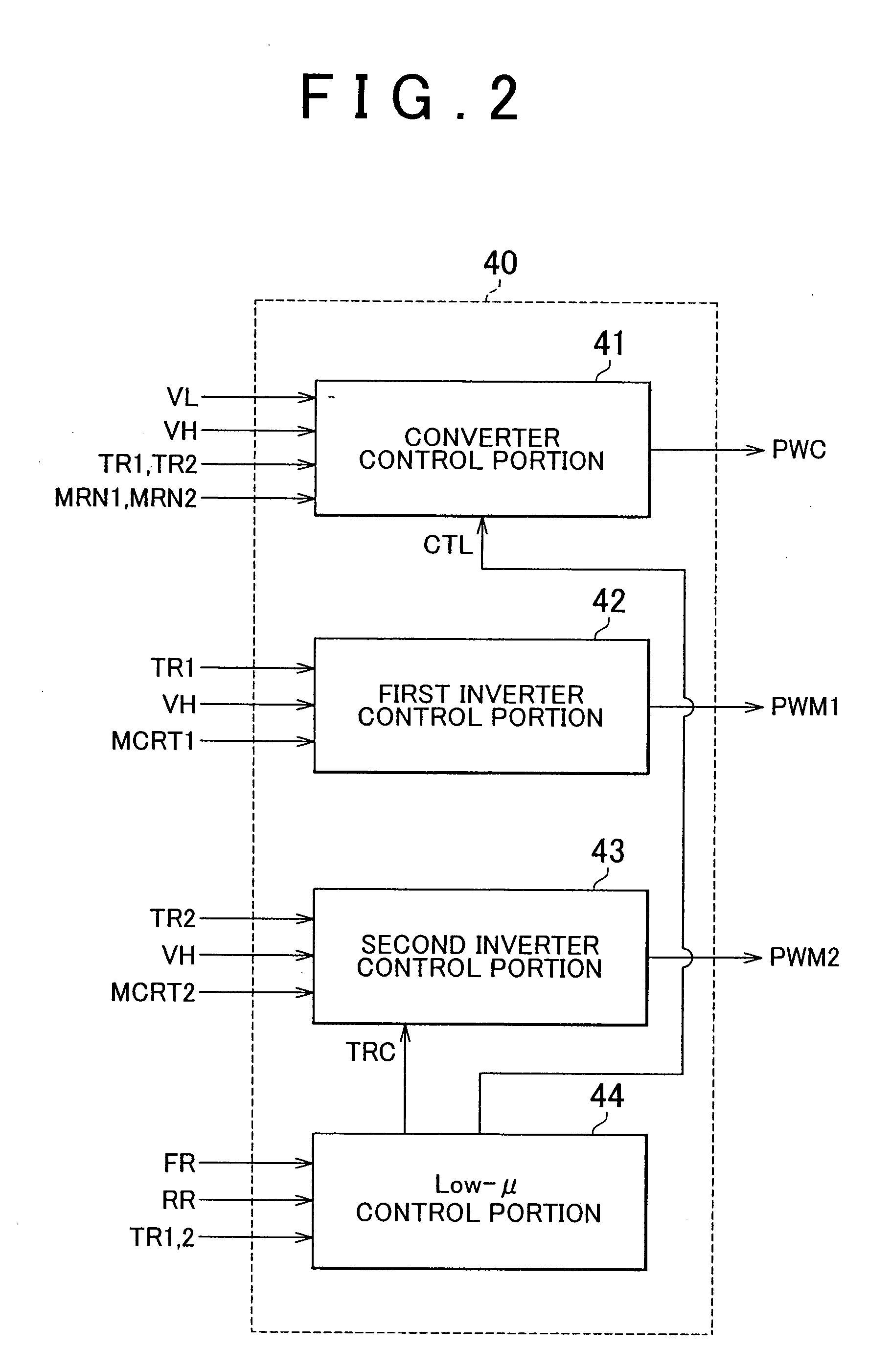Control apparatus and control method for electric vehicle
- Summary
- Abstract
- Description
- Claims
- Application Information
AI Technical Summary
Benefits of technology
Problems solved by technology
Method used
Image
Examples
first embodiment
[0047]FIG. 1 is a schematic block diagram of a hybrid vehicle that is an example of an electric vehicle provided with a control apparatus according to the invention. As shown in FIG. 1, the hybrid vehicle 100 includes drive wheels 2, a power split mechanism 3, an engine 4, and motor-generators MG1 and MG2. The hybrid vehicle 100 further includes an electric storage device B, a boost converter 10, inverters 20 and 30, an electronic control unit (hereinafter, referred to as “ECU”) 40, capacitors C1 and C2, power source lines PL1 and PL2, a ground line SL, voltage sensors 62 and 64, and current sensors 66 and 68.
[0048]The power split mechanism 3 is connected to the engine 4 and the motor-generators MG1 and MG2 to distribute power to the engine 4 and the motor-generators MG1 and MG2. For example, a planetary gear mechanism, which includes three rotation shafts of a sun gear, a planetary carrier, and a ring gear, may be used as the power split mechanism 3. The three rotation shafts are c...
second embodiment
[0087]FIG. 5 is a schematic block diagram of a hybrid vehicle that is an example of an electric vehicle provided with a control apparatus according to the invention. As shown in FIG. 5, the configuration of the hybrid vehicle 100A is the same as that of the hybrid vehicle 100 shown in FIG. 1, except that the hybrid vehicle 100A includes an ECU 40A instead of the ECU 40, and further includes an engine ECU 45.
[0088]The engine ECU 45 receives a control signal CTLEG from the ECU 40A. When the control signal CTLEG is activated, the engine ECU 45 controls the engine 4 to reduce the speed of the engine 4. Thus, when the control signal CTLEG is activated, the amount of electric power generated by the motor-generator MG1 using the power supplied from the engine 4 is reduced.
[0089]The ECU 40 determines whether the vehicle is slipping based on the rotation speeds FR and RR, using a method similar to that used by the ECU 40 in the first embodiment. When the ECU 40A determines that the vehicle i...
third embodiment
[0110]In a third embodiment, when it is determined that the vehicle is slipping, the torque of the motor-generator MG2 is reduced at a rate that is lower than a rate while no slipping is determined. This prevents a sharp change in the balance between the amount of electric power generated by the motor-generator MG1 and the amount of electric power consumed by the motor-generator MG2, and prevents an excessive voltage VH.
[0111]The configuration of the hybrid vehicle 100B in the third embodiment is the same as the configuration of the hybrid vehicle 100 in the first embodiment shown in FIG. 1, except that the hybrid vehicle 100B includes an ECU 40B instead of the ECU 40.
[0112]FIG. 11 is a functional block diagram of the ECU 40B in the third embodiment. As shown in FIG. 1, the configuration of the ECU 40B is the same as the configuration of the ECU 40 in the first embodiment shown in FIG. 2, except that the ECU 40B includes a second inverter control portion 43A instead of the second in...
PUM
 Login to View More
Login to View More Abstract
Description
Claims
Application Information
 Login to View More
Login to View More - R&D
- Intellectual Property
- Life Sciences
- Materials
- Tech Scout
- Unparalleled Data Quality
- Higher Quality Content
- 60% Fewer Hallucinations
Browse by: Latest US Patents, China's latest patents, Technical Efficacy Thesaurus, Application Domain, Technology Topic, Popular Technical Reports.
© 2025 PatSnap. All rights reserved.Legal|Privacy policy|Modern Slavery Act Transparency Statement|Sitemap|About US| Contact US: help@patsnap.com



